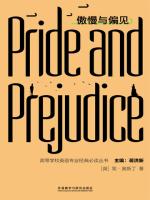Pride and Prejudice
用户822363
In Pride and Prejudice, Jane Austen uses delicate prose to depict the
marriage and love landscape of the English gentry class in the 19th
century. However, the core of the novel goes beyond romance—it is a
profound deconstruction of the human flaws of "pride" and
"prejudice". Mr. Darcy’s cold arrogance made him miss true
love initially, while Elizabeth Bennet’s prejudice, rooted in her
misunderstanding of Darcy, led her to reject his sincere feelings.
Through repeated conflicts and deeper understanding, both shed their
masks and corrected their perceptions. Their eventual union is not only
the fulfillment of love but also the transcendence of their own human
weaknesses. The most brilliant part of the novel lies in how it uses
everyday social scenarios—balls, home visits, and letter exchanges—to
connect the clashes of characters’ personalities. Elizabeth is not a
traditionally meek "lady"; she is independent, intelligent,
and unafraid to confront the disdain of the wealthy and powerful. Darcy,
too, is not a one-dimensional "gentleman"; beneath his
arrogance lies kindness and a sense of responsibility. This portrayal of
"imperfect" characters lifts the story beyond the cliché of a
romantic tale, turning it into a mirror that reflects human nature—we
may all have been as closed-off as Darcy due to pride, or as quick to
misunderstand others as Elizabeth due to one-sided perceptions. Two
centuries later, Pride and Prejudice remains touching precisely because
it reveals the essence of love and human relationships: true
understanding begins with letting go of one’s own pride and breaking
down prejudice against others.



 京公网安备 11010802032529号
京公网安备 11010802032529号